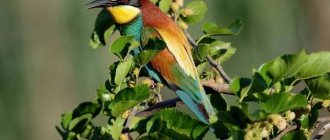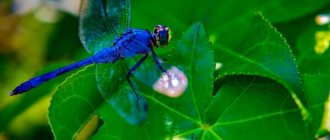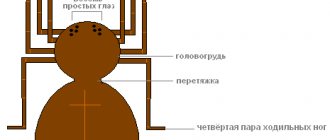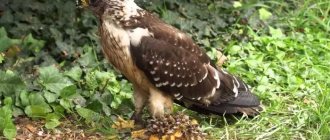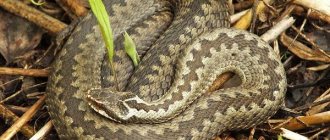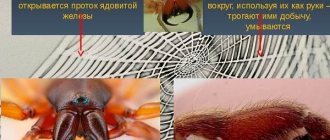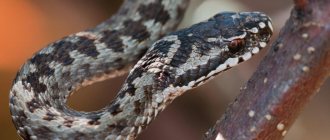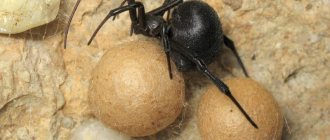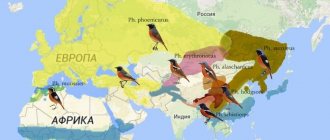- Where do hornets live?
We are surrounded by many amazing living creatures and one of them is the hornet. Our today's hero is not very loved by people, of course, because hornets are capable of attacking a person and stinging him painfully. Hornet venom can cause an allergic reaction, and in large doses (that is, with multiple stings) can even be fatal. But on the other hand, hornets are also very useful insects, including, they are simply magnificent
architects and builders, it all depends on the eyes with which we look at them. Our article today is about them.
What do hornets look like? (photo and description)
These representatives have different height parameters from 18 millimeters to 35. One of the largest is about 55 millimeters in length. In their structure, one can note a large head and a prominent crown. The compound eyes are located at the back. The color of the head is presented in a wide color palette - from black to yellow. They are also characterized by a striped abdomen, thin wings, strong jaws and large eyes.
Wasp-like insect
Although carpenter bees are non-aggressive in nature, they are often called black hornets or black wasps. The reason for this is their large size (up to 3 cm), as well as the strong noise that insects make when building a nest. Sounds comparable in strength to the sound of a drill can be heard for several meters. The carpenter bee received comparison with the wasp for the painful and even life-threatening effect of the poison, the consequence of which invariably is severe swelling.
Representatives of a rare species can be distinguished by their characteristic features:
- Large body black with a bluish tint on the abdomen;
- Long black hairs cover the entire body;
- The wide head is almost equal to the width of the chest;
- Large wings with dark purple veins and jagged edges;
- The male differs from the female in its smaller size, as well as the presence of a reddish tint in the lower segment of the antennae. In addition, the male does not have a stinger.
Important! There are no pollen baskets on the hind legs - they are completely replaced by long, thick villi.
Why is the hornet called that?
The roots of the word come from the Latin Vespa crabro (literally translated as “hornet wasp”). The common hornet is a species of large wasp that lives in Europe. It is larger in size than the common wasp, but smaller than the Asian hornet. In everyday life, hornets are called differently: “pirates”, “winged corsairs”. If we consider the meaning of the word hornet, then it means “evil man”, “obstinate”, Old Russian (srshen), Russian cer - Slavic (strashen), Polish (szerszen). In the 19th century, the genus Vespa was divided into two genera: hornets (vespa) and wasps (vespula), which means small wasp.
Where do the winged "pirates" live?
Hornets are called “pirates” because of their habits. They very brazenly commit robberies and thefts from other insects, in particular bees. At the same time, they act bravely and wisely. When getting their food, they use only their powerful jaws. The sting with poison is used only for self-defense from large animals and people.
Where do hornets live? They choose a variety of biotopes to live in, which are not necessarily associated with human habitation and agricultural land. Striped insects settle close to people due to the abundance of food.
In particular:
- There are always many insects living around a person’s home.
- Human food supplies serve as food for hornets.
A hornet can easily fly into the kitchen and profit from something. For example, to separate a small piece of meat from a piece from which the housewife plans to cook something. Berries and fruits grow in gardens and plots. Some people keep bees. In addition, it is convenient to build nests on human structures.
Where do hornets live?
The main part lives in the North of the globe. They can be observed in many parts of the planet. These insects have adapted well to warm Asian countries. European hornets live in agricultural areas, as well as in forests, thickets of groves, and large bushes. They like to build nests in toilets, on verandas, and in summer houses. They are also easy to find under stairs or in window openings. The vespin subfamily, living in the mountainous regions of Japan, is one of the most dangerous. In the Primorsky Territory of Russia you can find several species of these insects.
What do hornets eat?
They love rotten trees and stumps. But their favorite food is rotting berries. They prefer foods that contain a large amount of sugars (tree sap).
They can feed on other insects (wasps, bees, grasshoppers). They kill them with their poison and then chew them with powerful jaws. Hornets attack apiaries, destroying entire colonies. They are attracted to the scent of honey bees. Some types of hornets look for dead insects and are even ready to feast on food waste (meat products, fish).
Role in nature
Entomologists explain why the hornet is needed in nature. They are predators and destroy harmful insects and their larvae. Hornets play a regulatory role in wildlife. If they are completely destroyed, this will affect the balance of the ecosystem.
On the other hand, these predators harm beekeepers by eating bees. In addition, they damage fruits, reducing yields. If a person comes close to hornet nests, they may attack. These insects sting very painfully, causing allergic reactions and inflammation.
Reproduction
As soon as the weather changes and the sun begins to warm up, the female hornet is actively looking for a place to hatch her eggs. She flies over large areas in search of shelter to start a family. As soon as it finds a convenient corner, it immediately begins building a nest. Each egg has its own sector. After a few days, a small individual will hatch from it. She chews the lid and gets out. Long before winter, the female breeds offspring, which will continue the work of the uterus.
After fertilization, the males die. Then the old queen dies, and after some time, the individuals that were not fertilized die. Fertilized hornets overwinter and then create their own nest. Only thanks to a well-coordinated organizational system in the hornet family, reproduction is successful. The division of duties (females, males and queen) allows feeding, building and raising offspring in a harmonious system.
Carpenter bee: features of vital activity
Despite the name “solitary bees,” representatives of the species still have contacts, since the instinct of procreation is one of the main ones in nature. Each male protects his territory, where 5-6 females live. When a new individual appears, the male rises to a height (branch or bush) and attracts her attention with a strong buzz. If the female does not leave the nest, the male can penetrate inside and appear outside up to several times until his chosen one pays attention to him.
Although not an active honey plant due to the absence of a queen, the carpenter bee is nevertheless distinguished by great endurance and is able to fly long distances in search of food. Representatives of the species are hard-working and work even in bad weather, making the carpenter bee a valuable pollinator.
Important! In the same nest, up to 10 generations of xylocope can change - the dwelling will remain inhabited until the wood deteriorates. Although insects prefer secluded habitats (forest edges, steppes, forest-steppes), often the lack of suitable material pushes them to colonize human homes. In this case, there may be a threat to life, since a sting in the throat of such a bee is fatal.
Building a nest
An individual that has survived the cold season becomes the founder of the nest with the arrival of spring. Soon the female finds a safe place for herself high in the mountains or inside a tree. Then he arranges his place in the rooms where people live and in wooden outbuildings. Gnawing on woody species and crusty formations, insects build their houses from numerous steps. The wood goes through the stage of processing into a papyrus product. Such multi-level houses resemble products made from a thin napkin. You can see such structures in old trees, bird houses, barns. The color scheme of such designs can be varied. Brown stripes go with bright colors. Some of them look like an oval shape. But some are also round in shape. The size of such a structure is 700 by 400 mm.
Quite often, people compare the homes of hornets to a blotter nest, comparing the similarities with paper production. The main initial product for construction is thin tree cover and branches of young trees, well processed by hornets. Sticky saliva acts as a fastening material. Once applied to the house, it dries and hardens. The result is a rough, rough wrapper. The poor appearance of the structure is explained by the fact that the hornets build their houses from rotten wood. Some representatives of insects build their burrows with intricate labyrinths. They can be found deep in the ground or in forgotten animal holes. The depth of the hole can be about 60 meters.
Ways to deal with insect nests
The main way to combat hornets is to destroy their nests.
Only this can guarantee that the insects will leave the area. There are several ways to destroy their home. In order to find it you need to follow the flight of the hornet:
Sealing the nest
The work is carried out at night. This is the time of least insect activity. Seal the socket with foam. It fills all the cracks and openings of the hive. After sealing the nest, air stops flowing inside it. Lack of oxygen and nutrition leads to the death of insects.
Filling the nest with water
An insecticide must be added to the water prepared for filling the hornets’ home. The bucket is placed under the nest and carefully, so as not to frighten away the insects, it is cut off and lowered into the water. Poisonous liquid fills the honeycomb. Insects that are unable to get out die.
Smoke bomb
Smoking insects is much safer than burning them. To carry out the work, special smoke bombs are used: “Mukhoyar”, “FAS”, HELP, etc. Before setting fire to the bomb, it is necessary to increase the level of sealing of the room. To do this, all the cracks in it are sealed. Children, animals, food and drinking water in open containers should not be near the work. Work must be carried out in protective clothing and a respirator.
Burning out the nest with fire
When using this method of destroying insect homes, extreme caution must be taken. It can only be used to destroy nests located in open areas. They are doused with a flammable mixture (gasoline, kerosene or diesel fuel) and set on fire. The combustion process must be controlled. The fire should not spread to dry trees, grass or buildings.
Where do hornets spend the winter?
Hornets cannot tolerate extreme cold. But they carefully prepare for the winter. They set up their burrows on the property, at the dacha - wherever they can find shelter. How do insects manage to survive the winter and shelter from wet weather? Only the queens prepare for a long winter sleep. They play the role of leader in the family. For the female, the important point is to survive the winter and then lead her clan. It is also safe to hibernate. To do this, she has to stock up well on nutrients. Finding a good shelter can be considered a necessary condition for the survival of the uterus. Finding a safe place for the winter is a crucial moment in the life of the uterus.
To ensure ideal wintering conditions, you need to choose a quiet corner. Any option may be suitable except warm and cozy houses where people live. Since the warm temperature in the house can awaken the female earlier, and she will begin to build a nest. This scenario will lead to bad consequences. It will be difficult to find not only wood for the nest, but also food for the offspring. The uterus under such conditions is doomed to death. An important factor in favorable hibernation is stability, without sudden temperature changes. A large number of females die during harsh winters when there is little snow. They become easy prey for birds. As a result, most die.
Traps and bait
Destroying a nest does not always get rid of all the hornets. The remaining individuals on the site are caught using traps and baits. For this you can use purchased products or those made independently from improvised means and materials.
An excellent bait for them can be spoiled fish, fermented jam or a mixture of honey and beer. In the trade, you can buy the simplest trap to catch insects - sticky tape. A homemade trap can be made from cardboard. It is made in the form of a box, which is covered with a thick layer of honey or fruit syrup.
Have there been hornets on your property?
Was the caseNever
Place traps in places most frequently visited by hornets. Traps are periodically updated, replacing them with new ones. You can also catch insects using glass jars. The bait is placed in them and closed with a lid with a hole made in it in the shape of a cross. The edges of the cut should be folded inside the jar.
Cut off 1/3 of the top from a plastic bottle and insert it, neck down, into the hole in the cap. Place the jar where hornets most often visit. The insects will definitely feel the bait and fall into the trap. Another option for an insect trap is a container with fermented fruit or berry syrup. Install it near the insect habitat.
How long do hornets live?
Hornets differ in appearance (body size) and perform different tasks and functions. In autumn, males begin the process of fertilization, after which they soon die. Working individuals have a short lifespan - no more than three weeks. The female lives the longest - about a year. Working females and males do not live long. They grow up at the end of summer, and in the fall (early September) most of the individuals die. The surviving insects survive only until the first cold weather. Males are needed by the family only for fertilization. After mating they live only a few days. The female is able to withstand the cold and live in hibernation for up to a year. In the second winter, its life cycle ends and it dies.
Who will survive the winter?
Despite the fact that hornets look for secluded places for the winter, where they then hide throughout the entire period, only females can withstand the cold climate. Males die at the end of autumn. The same outcome awaits females whose age has reached 1 year; not a single representative of the hornet genus is able to survive winter twice. Young females are the only ones who stay for the winter. Individual “cleaners” and working insects also die in the fall.
If you think about how long a hornet lives, it turns out that the average lifespan is several weeks. This is how long working insects live. Females capable of reproduction represent a minority of the colony of thousands, however, their life expectancy is much longer.
Thus, if large pests have encroached on honey and are destroying bees, it is recommended to determine their species and study their lifestyle. This will help fight them. Honey attracts hornets, like any sweetness - representatives of the genus of True wasps. This is the main danger of such pests. In addition, when feeling threatened, they are capable of biting humans. Most often, beekeepers who protect an apiary (honey, hives, bees) become victims of a large wasp.
Related posts:
Types of hornets
There are several dozen popular species. Hornets are part of the wasp family. They have a lot in common, but have a number of distinctive features that set them apart from other individuals. There are 23 species of hornets. The most common types:
- Common (living in Europe): brown, body length 35mm. It is distinguished by two bright stripes on the lower part of the body. It is well known to Russian gardeners and beekeepers, but was recently brought to the USA and now lives there.
- Black hornet (Dybowski): stripes on the black back are yellow (predator color). The wings are brown. Length 35mm. Few people are familiar with this type of hornet. Listed in the Red Book. They live in the Amur region, Transbaikalia and Primorsky Krai.
- Giant Asian: its body length is 6 cm, has a large wingspan. It is distinguished by its bright head and striped back. lives mostly in Asian spaces. It is also found in the mountains of Sri Lanka, as well as in India and Taiwan. It has a large sting about 6mm. The bite is dangerous and contains a toxic substance. One of the largest in the world.
Some of the most dangerous hornets are Asian hornets, called “killer” hornets. - Japanese hornet (Japanese): a subspecies of the giant hornet called the "sparrow-bee" lives on Sakhalin. Large yellow head, large eyes, adjacent to them are 3 ocelli. The bite is painful and has dangerous consequences, as the venom contains toxins.
- Eastern: has the most elaborate coloring of all types. It is distinguished by a wide yellow stripe on its belly. Bright red with a crimson tint to the wings and body. One of the many species that tolerates heat well. Well adapted for living in deserts and steppes. Originally from North Africa.
- Philippine hornet: has a black color. Another name for the species is Lamentable. It is dangerous because it produces highly toxic poison. The bite is very unpleasant. The main habitat is the Philippine Islands.
What danger can they pose?
Having understood the appearance of the black hornet, you can exclude the possibility of meeting it. Note that the bite of the presented insects is much more painful when compared with ordinary ones. But of course, there is no comparison to the royal murder hornet - the Asian hornet is a large insect, the bite of which can lead to tissue swelling.
If a colony is attacked, there is a risk of adverse consequences. The human body can react differently to a bite.
The poison is quite toxic, among its components:
- Bradykinin;
- Histamine;
- Antigens;
- Formic acid.
The huge hornets themselves will not attack people without reason. Most often, the attack is carried out in case of damage to the hive. It is not recommended to touch the nest if insects have settled in your garden plot. The hive can be removed only after the departure of the main owner - the queen. It must also be said that they can sting several times.
Differences between a hornet and a wasp
These individuals are easily distinguished not only by size. The main difference from the wasp is its large, impressive jaws, unlike representatives of wasps. The coloring is slightly different. In the hornet it is more diverse. It is larger in size and has a hairy fluff. The hornet is distinguished by its movable whiskers and crown. There are similarities, but the wasp has a narrow waist.
Habitats
Hornets are found in the Northern Hemisphere. The real homeland of all these species is Eurasia. Of all the varieties of hornets, only one species has settled in North America - the European one. But it was accidentally introduced by settlers and did not advance further than the eastern part of the North American continent.
Interesting!
The same name in America is often used to refer to the large spotted wasp.
Since scolias, wasps and hornets are representatives of the same order, people often confuse them with each other. It is unlikely that anyone will seriously study a brightly colored insect that has flown into a window. But in some areas, these stinging individuals are a protected species, so it is useful to be able to distinguish a wasp or scolia from a hornet.
How dangerous are hornets to humans?
Hornets can pose a danger to people in some cases. To protect themselves, the hornets gather very quickly; for this, the individual releases a special substance - an alarm signal. Other individuals can react to it and fly to the aid of a comrade and attack the offender en masse. Therefore, you should not touch the hornet in vain.
The mortality rate from hornet stings is very low, but the risk is still present. In addition, each subsequent sting will be worse tolerated by the body, because immunity to the poison is not developed, but on the contrary, the negative reaction intensifies.
Benefits and harms of insects
The carpenter bumblebee is an insect that feeds on nectar and pollen from a wide variety of plants. In addition, adults fly long distances and are not afraid of bad weather. Therefore, the benefit lies in the pollination of trees, shrubs or crops.
Interesting fact! Insects create nests only in dry and soft woody structures. Females will never settle in fresh material, since their jaws will not be able to gnaw through passages. This means that the settlement of carpenter bumblebees in buildings, sheds or fences indicates the need for repairs.
The black and purple carpenter bumblebee is dangerous to humans. An insect bite is painful. It is especially recommended to beware of these bumblebees if you are allergic to bumblebee venom. Only females will be able to sting, but they will never attack without reason. Carpenter bumblebees are distinguished by their peaceful nature. Having met a person, the insect will simply fly away and sting only if the nest is threatened.
Hornet sting: harm of poison and consequences of toxic effects
The bite of this insect is more painful than a bite from a bee or wasp. It all depends on the individual body’s ability to tolerate pain. If a sting occurs, it is advisable to help the person as quickly as possible. Hornets have a needle with which they can pierce the human body repeatedly. Individuals from Asia are more poisonous than European ones. The bite is accompanied by sharp pain with severe swelling. May cause: severe pain and hemorrhage followed by suppuration.
Does the hornet bite or sting?
The hornet has powerful jaws. His bites are very deep. The wounds take almost a week to heal. When attacking a person, hornets use a sting that leaves scars in the form of dots, but they can also simply bite with their claws. The poison is dangerous because it is toxic and can poison the body. The bite is very painful and the consequences can be unpredictable. Elderly people, children and allergy sufferers are especially at risk. Swelling and inflammation can appear instantly after an insect attack, and suppuration is also possible. Signs of poisoning are characterized by nausea and severe dizziness.
Bites pose the greatest danger to those people who have an allergic reaction. They can worsen a person’s condition from several hours to 2-3 days. The bite is dangerous because the body of a person with allergies does not fight well against the effects of the poison. As a result, large swelling and difficulty breathing may occur. In some cases, people lose consciousness. The insect venom contains histamine, which most often causes a person to feel unwell, up to and including anaphylactic shock. Fatalities are caused by neglect of medical care and delayed first aid.
Nutrition
Hornets can be called omnivorous insects; they are dexterous hunters, but at the same time lovers of plant food. What do hornets eat? Adults have a wide gastronomic diet:
- nectar;
- juice of ripe soft fruits (peach, pear, apple);
- berries - raspberries, blackberries, strawberries;
- aphid secretions;
- honey.
Predatory insects, except for the queen, eat their relatives only at the larval stage. Working individuals with enviable diligence shuttle between the nest and the hunting site, bringing spiders, centipedes, and worms to their offspring. Hornets cut up prey with powerful jaws, feeding protein to the growing larvae and queen, which requires strength to lay eggs. Large wasps often attack individual bees and hives. One large individual is capable of tearing apart up to 30 honey plants.
Interesting fact. Hornets do not have a long period of sleep; they are active at any time of the day. To rest, they simply freeze for a few minutes. Numerous hungry larvae, the number of which sometimes reaches up to 500, require a lot of food. A family of predatory insects is capable of destroying up to 0.5 kg of garden pests daily.
What to do if bitten by a hornet?
Usually people have little idea what to do if they are bitten by an insect or do not have enough knowledge to provide first aid. The appearance of severe pain is not a sign that the human body is subject to destruction. You need to know that insect venom contains components that have a strong effect on nerve endings. Therefore, the pain shock can be pronounced. In a normal situation, it is quite difficult to predict the consequences of a bite; each person’s body reacts individually. For some, a bite can only cause pain and swelling, while for others it can end in disaster, including asphyxia, loss of consciousness and even death. If bitten, first aid must be provided immediately. Inaction is unacceptable!
- The first necessary condition that you need to remember is that there is no sting in the wound, only poison.
- Try to remove the poison by sucking it out.
- Treat the bite site with a solution of citric or acetic acid.
- Try washing with any soap solution.
- Treat the wound with an alcohol-containing solution or hydrogen peroxide.
- After this, you need to apply cold with wet sugar. This reduces the risk of poison spreading throughout the body.
- You should not drink alcohol after a bite. This will cause even more swelling and worsen the person’s condition. Bites to the neck and head area are very dangerous.
- From folk remedies, you can use the juices of plants such as dandelion, plantain or soda solution. Onion and garlic cloves are also suitable for treatment.
Signs of an allergic reaction from a bite:
- severe headaches;
- elevated temperature;
- cardiopalmus;
- hard breath;
- pain in the abdomen.
If you have these symptoms, you need to take painkillers in tablet form. This reduces the effect of histamine. You also need to drink a lot of water to reduce poisoning.
It must be remembered that if none of the methods help with a bite, and the condition begins to worsen, call a doctor immediately.
Consequences
- children;
- elderly and senile people;
- patients with a history of allergies, chronic diseases of the heart, blood vessels, and respiratory organs.
The severity of symptoms and the possibility of developing complications depends on the health status of the victim.
If there was no allergic reaction of the body, then the inflammation caused by the hornet sting goes away in a few days. This can be judged by the reduction in swelling, redness, and pain in the wound area.
The damaged area may itch for some time. How to relieve itching after a hornet bite? It is enough to apply cold. If this is one of the symptoms of an allergic reaction, then you should consult a doctor who will prescribe antihistamines.
